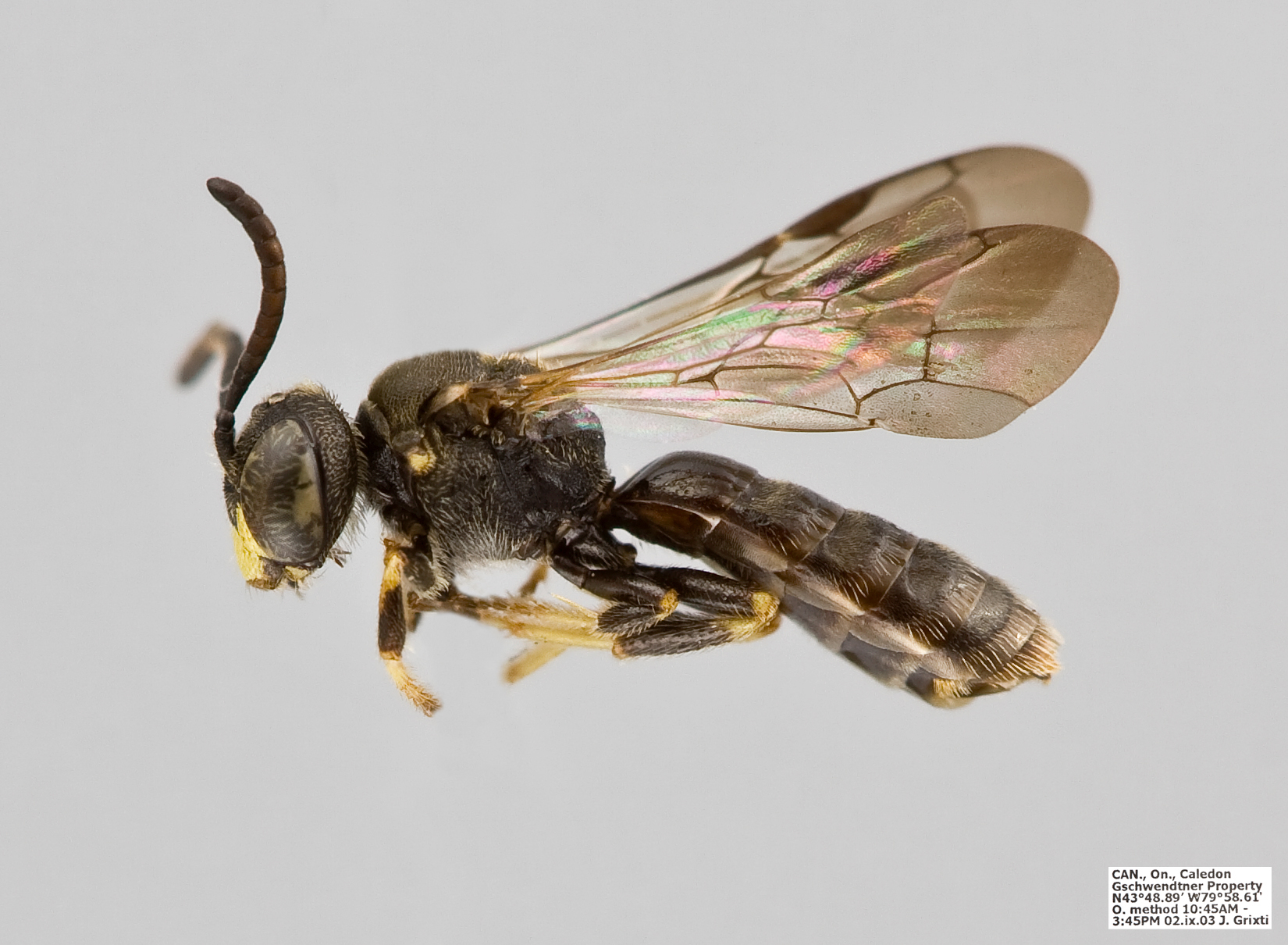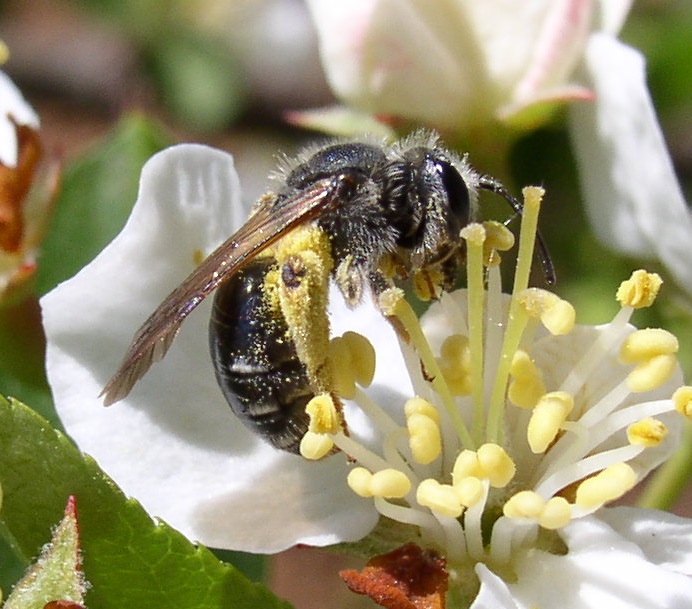|
Protandrenini
Protandrenini is a tribe of mining bees in the family Andrenidae. There are at least 12 genera and at least 380 described species in Protandrenini.Engel M, Gonzalez V (2011) ''Andinopanurgus'', a new Andean subgenus of ''Protandrena'' (Hymenoptera, Andrenidae). ZooKeys 126: 57-76. https://doi.org/10.3897/zookeys.126.1676 Genera These 12 genera belong to the tribe Protandrenini (some authors treat subgenera within this classification as genera): * '' Anthemurgus'' Robertson, 1902 * ''Anthrenoides'' Ducke, 1907 * '' Chaeturginus'' Lucas de Oliveira & Moure, 1963 * '' Liphanthus'' Reed, 1894 * '' Neffapis'' Ruz, 1995 * '' Parapsaenythia'' Friese, 1908 * ''Protandrena ''Protandrena'' is a genus of mining bees in the family Andrenidae. Depending upon whose definition of the genus one follows, there are anywhere from 50 to 180 described species in ''Protandrena''; traditional classifications recognize 7 subgener ...'' Cockerell, 1896 * '' Psaenythia'' Gerstäcker, 1868 * '' Psaen ... [...More Info...] [...Related Items...] OR: [Wikipedia] [Google] [Baidu] |
Mining Bee
''Andrena'' is a genus of bees in the family Andrenidae. With over 1,500 species, it is one of the largest genera of animals. It is a strongly monophyletic group that is difficult to split into more manageable divisions; currently, ''Andrena'' is organized into 104 subgenera. It is nearly worldwide in distribution, with the notable exceptions of Oceania and South America. Bees in this genus are commonly known as mining bees due to their ground-nesting lifestyle. Morphology ''Andrena'' are generally medium-sized bees; body length ranges between 8 and 17 mm with males being smaller and more slender than females. Most are black with white to tan hair, and their wings have either two or three submarginal cells. They carry pollen mainly on femoral scopal hairs, but many ''Andrena'' have an additional propodeal corbicula for carrying some pollen on their thorax. C. D. Michener (2007) ''The Bees of the World'', 2nd Edition, Johns Hopkins University Press. They can be distin ... [...More Info...] [...Related Items...] OR: [Wikipedia] [Google] [Baidu] |
Andrenidae
The Andrenidae (commonly known as mining bees) are a large, nearly cosmopolitan family of solitary, ground-nesting bees. Most of the family's diversity is located in temperate or arid areas (warm temperate xeric). It includes some enormous genera (e.g., ''Andrena'' with over 1300 species, and '' Perdita'' with over 700). One of the subfamilies, Oxaeinae, is so different in appearance that they were typically accorded family status, but careful phylogenetic analysis reveals them to be an offshoot within the Andrenidae, very close to the Andreninae. C. D. Michener (2007) ''The Bees of the World'', 2nd Edition, Johns Hopkins University Press. Description The Andrenidae are typically small to moderate-sized bees, which often have scopae on the basal segments of the leg in addition to the tibia, and are commonly oligolectic (especially within the subfamily Panurginae). They can be separated from other bee families by the presence of two subantennal sutures on the face, a primitive ... [...More Info...] [...Related Items...] OR: [Wikipedia] [Google] [Baidu] |
Pseudopanurgus Rudbeckiae Male
''Pseudopanurgus'' is a genus of mining bees in the family Andrenidae. There are at least 130 described species in ''Pseudopanurgus''. Pseudopanurgus bees often have 2 submarginal cells in their forewings. Their size range for extra-small to small, 3mm to 10mm See also * List of Pseudopanurgus species This is a list of 135 species in ''Pseudopanurgus'', a genus of mining bees in the family Andrenidae. ''Pseudopanurgus'' species * '' Pseudopanurgus adjunctus'' Timberlake, 1975 * '' Pseudopanurgus aestivalis'' Provancher, 1882 - summer miner bee ... References Further reading * * External links * Andrenidae Bee genera Articles created by Qbugbot {{Andrenidae-stub ... [...More Info...] [...Related Items...] OR: [Wikipedia] [Google] [Baidu] |
Anthemurgus
''Anthemurgus passiflorae'' (the passionflower bee) is a small (7.5-8.5 mm long), black, bee that occurs from central Texas to North Carolina and north to Illinois. Females of this solitary bee use collected nectar and pollen to feed larvae located in nests constructed in the ground (through mass provisioning). This uncommon bee is unusual for two reasons: first, the only known pollen host is a single species—the yellow passionflower (''Passiflora lutea'') (such specialization is called oligolecty); second, because of its size and foraging habits, the passionflower bee is thought to contribute little or nothing toward the pollination of its host plant. Female bees remove pollen from ''P. lutea'' by suspending themselves under an anther and scraping the pollen out with open mandibles. This unique position of pollen collection almost never results in pollination as the female bee rarely touches the stigma. The genus ''Anthemurgus'' contains only the passionflower bee and th ... [...More Info...] [...Related Items...] OR: [Wikipedia] [Google] [Baidu] |
Anthrenoides
''Anthrenoides'' is a genus of bees Bees are winged insects closely related to wasps and ants, known for their roles in pollination and, in the case of the best-known bee species, the western honey bee, for producing honey. Bees are a monophyletic lineage within the superfamil ... belonging to the family Andrenidae. The species of this genus are found in Southern America. Species: *'' Anthrenoides admirabilis'' *'' Anthrenoides affinis'' *'' Anthrenoides albinoi'' *'' Anthrenoides alineae'' *'' Anthrenoides alvarengai'' *'' Anthrenoides antonii'' *'' Anthrenoides araucariae'' *'' Anthrenoides atriventris'' *'' Anthrenoides birgitae'' *'' Anthrenoides bocainensis'' *'' Anthrenoides caatingae'' *'' Anthrenoides calderensis'' *'' Anthrenoides cearensis'' *'' Anthrenoides cordobensis'' *'' Anthrenoides corrugatus'' *'' Anthrenoides cyphomandrae'' *'' Anthrenoides deborae'' *'' Anthrenoides densopunctatus'' *'' Anthrenoides digitatus'' *'' Anthrenoides eleg ... [...More Info...] [...Related Items...] OR: [Wikipedia] [Google] [Baidu] |
Protandrena
''Protandrena'' is a genus of mining bees in the family Andrenidae. Depending upon whose definition of the genus one follows, there are anywhere from 50 to 180 described species in ''Protandrena''; traditional classifications recognize 7 subgenera, some of which are sometimes elevated to genus rank, and other classifications place many of these species in the related genus ''Pseudopanurgus'' (e.g.), leaving ''Protandrena'' with a much smaller constituency. In the most inclusive definition, they are found from Canada through Argentina. However, there is current disagreement whether the ''Protandrena'' in South America belong to different genera, in which case the genus extends only as far south as Panama. They are solitary bees, but some species nest in aggregates. They prefer to nest in sunny areas with sparse vegetation. The underground nests have cells lined with a chemical substance. This "wallpaper" acts as a barrier between fungi and bacteria. The eggs hatch, the larvae devel ... [...More Info...] [...Related Items...] OR: [Wikipedia] [Google] [Baidu] |

